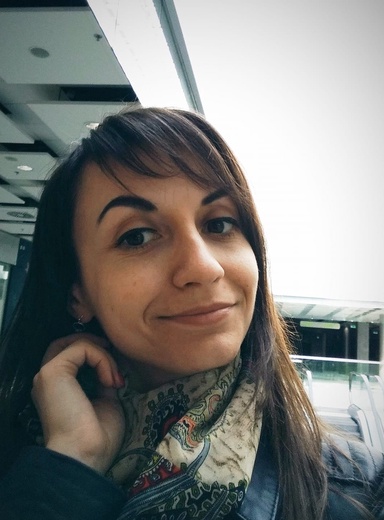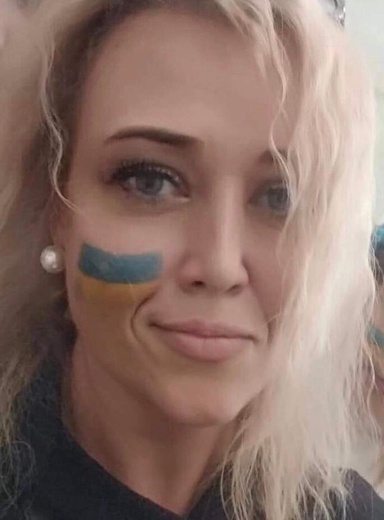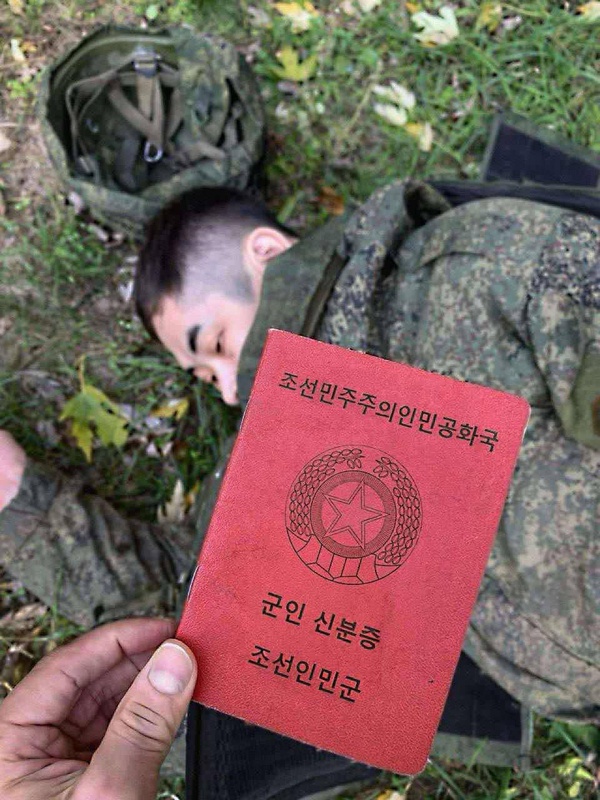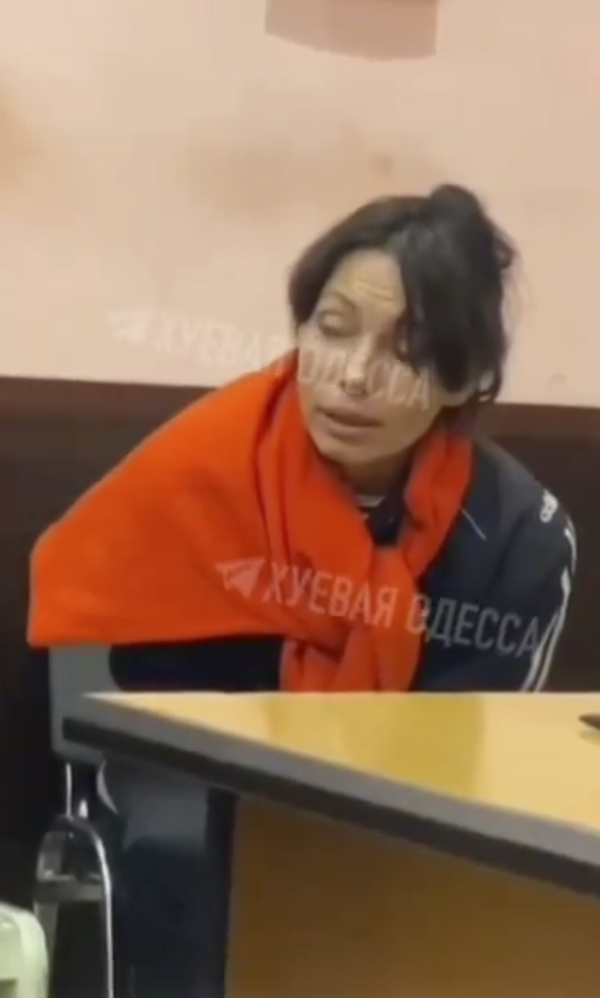Chinese media echo russian fake news about “Ukrainian Nazis” to rationalize the russian invasion of Ukraine

The Chinese media allegedly maintain a neutral stance when covering the war in Ukraine. However, they actually perpetuate russian narratives, specifically those related to “Nazism”.
An example of this can be seen in the Global Times, a tabloid affiliated with the main newspaper of the Chinese Communist Party. In an article by reporter Frank Bro, a connection is made between Payton Gendron, who killed ten people in Buffalo, New York, and the Azov Regiment. The author asserts that Azov is a “controversial ultranationalist armed group in Ukraine” involved in training Western terrorists and employing Nazi symbols.
This information is clearly false.
Chinese media outlets propagate russia’s false Nazi narrative as a means to justify the russian invasion of Ukraine. Even prior to February 24, 2022, russia actively engaged in a propaganda campaign, aided by the media, to dehumanize Ukrainians. They labeled us as puppets of the West, denied the existence of our country, and attributed fascist/Nazi traits to all Ukrainians. Subsequently, the narrative of “demilitarization” and “denazification” was presented as a pretext for unleashing a full-scale war in Ukraine.
To comprehend why propagandists label Azov fighters as Nazis, it’s necessary to revisit the events of 2015. It was during this time that the russian propaganda machine began equating nationalism with Nazism, identifying Ukrainian nationalists as their primary enemies. As the full-scale invasion unfolded, anyone who expressed pro-Ukrainian sentiments or resisted submission to the russians was indiscriminately called a nationalist. Merely being Ukrainian became sufficient grounds to be accused of Nazism by the russians.
Initially, Pravy Sektor embodied the image of Ukrainian nationalism, but in 2022, the Azov Regiment assumed that role. Following the full-scale invasion, the Azov Regiment became the primary target of russian defamation. Propagandists claim that Azov is built upon a specific ideology, a blend of neo-Nazism, racism, anti-Semitism, and God knows what other -isms. They cite the presence of individuals with far-right beliefs among its founders as evidence to support this claim.
- Firstly, it’s important to note that the individuals who were previously associated with the Azov Regiment are no longer part of the regiment.
- Secondly, there is a lack of real evidence substantiating the claim that the Azov Regiment adheres to a neo-Nazi ideology. Likewise, there are no military formations or units in Ukraine, whether within the National Guard or the Armed Forces, that are formed based on ideological grounds.
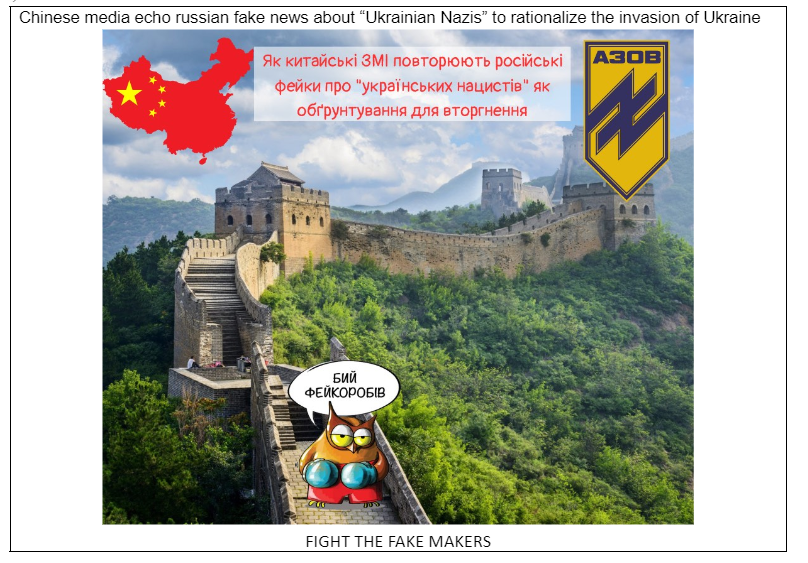
The Global Times refers to Azov as an armed group, but it’s important to clarify that Azov has never been an unofficial group. Even from its inception in 2014, this volunteer unit was under the subordination of the Ministry of Internal Affairs. Subsequently, Azov became a separate special purpose detachment within military unit 3057 of the National Guard of Ukraine. In February 2023, it underwent expansion and became a brigade.
Regarding the allegations of training Western terrorists, the origins of these claims can be traced back to an initiative in the US Congress. In 2019, Democratic congressmen called for Azov to be designated as a foreign terrorist organization. Congressman Max Rose, the initiator of this request, asserted that the battalion had connections to an Australian individual responsible for the 2019 terrorist attacks in New Zealand. The only alleged link between them was a symbol - according to the congressman, the terrorist had worn the “Azov sign”. However, this initiative ultimately failed, and Azov has never been included on the list of terrorist organizations.
In response to the accusations made by the congressman, the Atlantic Council, a US think tank, published an article titled - Why Azov should not be designated as a foreign terrorist organization. The author of the article highlighted that the symbol worn by the New Zealand terrorist was not an Azov symbol but rather a patch featuring the so-called “Black Sun”. This particular symbol was originally appropriated by Nazi Germany and later adopted by right-wing radicals worldwide. It’s true that in 2014, Azov did utilize symbols that bore resemblance to the “Black Sun”; however, it’s incorrect to attribute this symbol solely to Azov since the group merely incorporated existing and widely used far-right imagery.
In the case of the Buffalo shooter, we witness another attempt to establish a connection between the Azov fighters through symbolism. The perpetrator was wearing a patch depicting the “Black Sun”. Currently, the official symbol displayed on the chevrons and flags of the brigade is the “Idea of a Nation” sign. This symbol takes the form of a monogram featuring two letters, “I” and “N”. Ukrainian nationalist organizations actively utilize this emblem. However, the russians claim that it also signifies Nazi ideology due to its resemblance to the Wolfsangel rune, which appeared on the chevrons of certain Nazi German units during World War II. But, they disregard the fact that this rune has been in use since the Middle Ages and can be found on various coats of arms of German cities.
Regarding the author of the article, Frank Bro, there is hardly any information available online. Only a handful of English articles can be found from the past year, with half of them being dedicated to spreading fake information about Ukraine. The author propagates conspiracy theories relating to biolabs and Nazis. It’s evident that, despite being written in English, these articles primarily target a domestic audience and contribute to the overall media landscape depicting how Chinese media covers the ongoing war. Their objective appears to create a negative perception of Ukraine while fueling anti-Western sentiments. On the other hand, russia is portrayed as a country that simply seeks to “help out”, thus drawing a parallel with Taiwan.
The timing of the Global Times article is also significant. It was published on May 17, 2022, coinciding with the commencement of the operation to rescue the Ukrainian military trapped within the Azovstal plant. After 86 days, they were ordered to cease their defense and surrender their weapons. With global attention focused on the defenders of Mariupol, propagandists aimed to divert attention and tarnish the reputation of the Azovstal defenders, who had become a symbol of Ukrainian resilience ![]()

